This post is part of a monthly series, Then & Now, that uses photos to show the development and changes taking place on the farm.
April is a tremendous month at our location. Spring is really only just beginning to stir as late March tips into early April. By the end of April, Spring has exploded into long warm sunny days with the trees fully leafed out, with the hummingbirds returning and the bats making their first appearances snatching bugs out of the evening air.
Spring comes galloping in during April and you can see remarkable changes on just about a daily basis. The dogwood blooms come and go in a flush of heartrending beauty. The hesitant grass gets its legs under it and charges skyward. The surrounding mountains, visible all winter through the dormant leafless trees, disappear behind an embracing wall of green.
April will see a few nights, at least, with temperatures dipping below freezing and we give thanks to the wood stove. And it will see days with the doors and windows flung wide to admit the breeze and sun rays you can actually feel in contrast to the winter rays that illuminate but seem to transmit little warmth.
During an April evening you’ll have the peculiar startling experience of walking out onto the porch after sundown and hearing what seems like a deafening din of insects! The nights of winter and early spring had been silent for so long you hadn’t noticed.
April is one of my favorite months here.
April 2020
The work begins in earnest.
The shed that was nearly a lost cause got rehabbed, a fresh coat of paint, new doors, and the first of many lean-tos constructed on the property.
The poor riding mower we got from craigslist was no match for the roots, rocks, rugged terrain, and the various bits of junk sticking out of the dirt. It sort-of lasted a season but I spent more time fixing it than mowing with it.
This photo taken April 1, 2020 depicts the potential of this place. The lay of the land, the trees just starting to bud and leaf out, the texture of the clouds at sunset.
What can’t be seen in the photo is the overgrowth, the fences in disrepair, the dilapidated buildings, the junk and trash strewn around.
April 2021
This little buckling, a Nigerian dwarf we named Finnegan, was my birthday present from Rachael. A cold snap the night before called for an adorable goat jacket. In April 2021 we took our first steps into the world of rotational grazing using electric netting, as shown here.
Rachael started to get good at hatching birds…
Guinea keets.
One of the ducklings we hatched and raised with several others who lived in our shower for a while.
My first big fencing job. To look at the corner posts and fence runs now you can probably tell it was my first effort at a big fence project. It gets the job done but will need updating in a year or two.
One of my favorite photos of Ginny. It shows her energy and joy.
“Ummmm, this snack pan is empty. Photos can wait.”
April is the month for dogwood blooms in our area. I went bananas last year and this year taking photos.
Expanding our rainwater storage under the back deck.
My mom’s memorial garden starting to look pretty good. Note the massive chunk of petrified wood!
Fencing project done and animals let onto the new pasture.
It looks nice here, but I messed up. Grazed it too hard, with too many animals, too early in the season. It is just now, a year+ later, starting to recover, after I spread straw and grass seed.
Now that my eye for grass is a lot better I can easily tell from this photo that this early season flush was way too young and tender to graze. Oops. Lesson learned.
That said - it was pretty cool recruiting the ciritters to clear more land in the woods to expand the pasture!
We did our first shearing in late April last year. The weather had already started to get hot. Based on this experience we decided to do spring shearing in March, and probably another one in July/August just to help keep the sheep cool.
And then…we got pigs!
The idea was just to get a couple of feeder pigs to raise on pasture. But Rachael found a screamin deal on marketplace where a guy wanted to get rid of four nearly full-grown kune kunes (a boar and three sows).
The pig area was not ready, so we put them in the small lower pasture behind the goat shed.
Hoo boy were we in for an adventure with the pigs! Tune in next month to see what happened…
April 2022
April is definitely the month for dogwoods.
Tales to come of the pig adventured I alluded to above. For now, let’s skip ahead to the test run of the pig loading setup I built over the past couple of months…
My foray into veggie gardening has begun. Wish me luck developing that green thumb…
Planted potatoes, turnips, and spinach first.
Grape vine.
Raspberry.
Goji berry.
Also planted a blackberry bush, another peach tree, and a plum tree.
The pears, peaches, apples, pecan, and fig trees I planted last year survived the winter (and the deer nibbling at them) and are leafing out/blooming this month. Some day we’ll have a proper orchard!
Emerald and her twin girls are healthy and happy.
“You got treats!?!?!?!?!” Theo says.
“Can’t you tell we’re starving to death?”
Possum and his boy Jalebi. Possum got to go out and eat fresh grass while Jalebi stayed in juvenile detention, being weaned off his momma Clarice.
Here’s a little montage from rounding everybody up to go out on rotational grazing. If last year is any indication they’ll be out on rotation until Christmas.
The mowing/brush clearing crew go to work on a locust thicket…
…and they do excellent work!
Jalebi finally got let out of juvvy and rejoined his momma.
The pigs got let onto fresh pasture as well.
Young Moh (center) is now our ram, as we select for Shetland traits. Rachael castrated Onion (right) a few weeks ago during spring shearing.
We end April 2022 with a sad story that could have been worse. During morning rounds I noticed a young ewe staying away from the group and acting like she was uncomfortable, and with something hanging out of her backside. I thought maybe she had eaten a piece of twine or string and was having trouble pooping it out. I decided to let her try to work it out for a couple of hours and check on her later.
When I checked on her around mid-day, nothing had changed. She still seemed uncomfortable and hadn’t passed the “string.” So I caught her, put her in a dog kennel in the back of my truck, and took her down to the clinic in town.
Rachael figured out right away that the “string” was a piece of the placenta, and that she was trying to lamb but couldn’t for some reason.
As I held her in the grass behind the vet clinic, Rachael reached in and found a stillborn lamb. It wasn’t positioned correctly for birth, and was too big for this young, small ewe anyway. Rachael managed to pull the dead lamb out, and saved the ewe’s life.
We put the ewe in a pen in the barn and fed her alfalfa and treats for a couple of days while she recovered. She’s back with the flock now and doing fine!
It’s sad to lose this baby but if we wouldn’t have seen and acted the ewe would have died as well. A beneficial by-product of management intensive grazing is that one or both of us see the animals on a daily bases, usually twice daily. Thus we can spot many problems as they arise and respond quickly. This makes a big difference for herd health and minimize sickness and suffering of the critters.









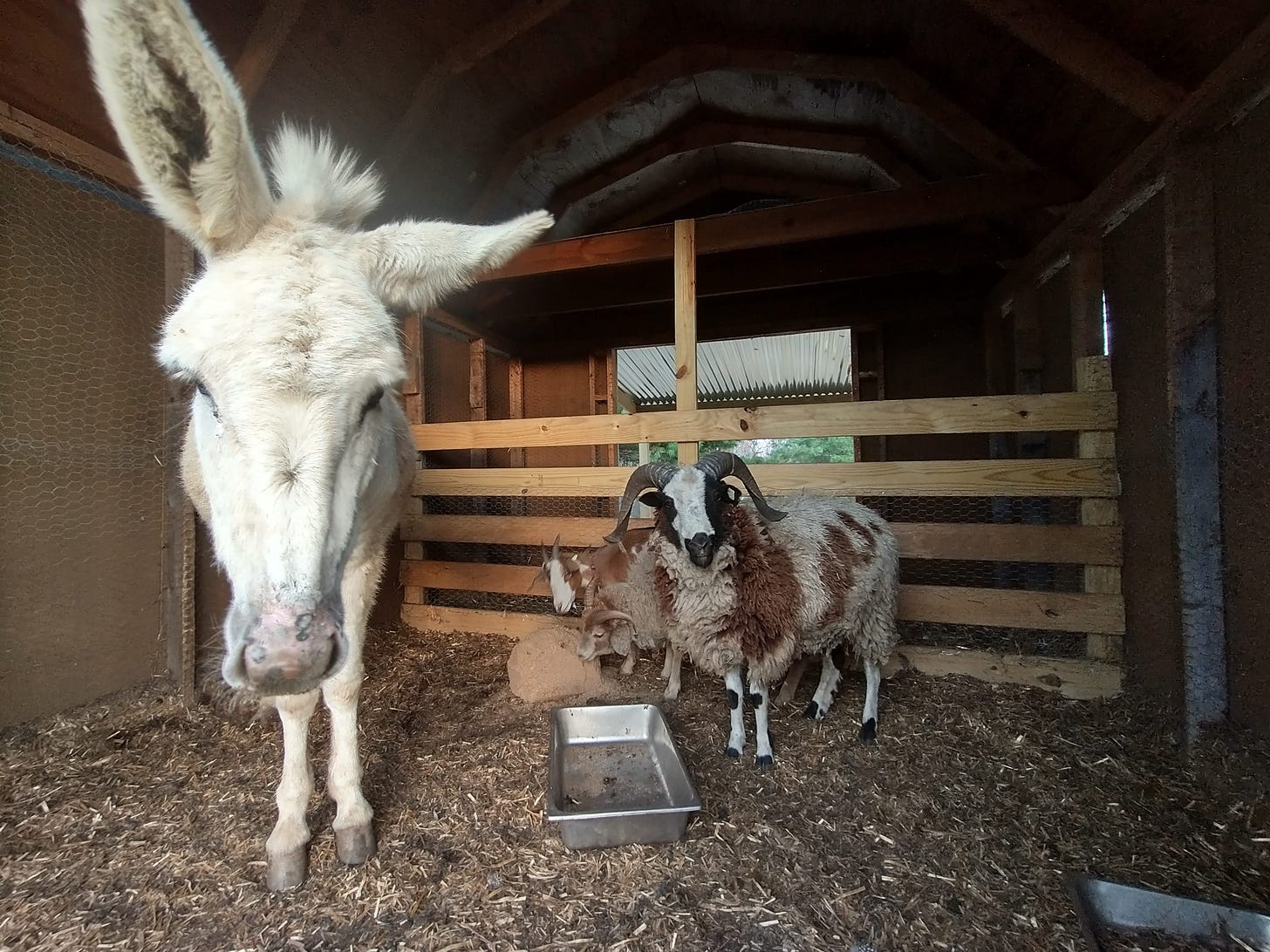




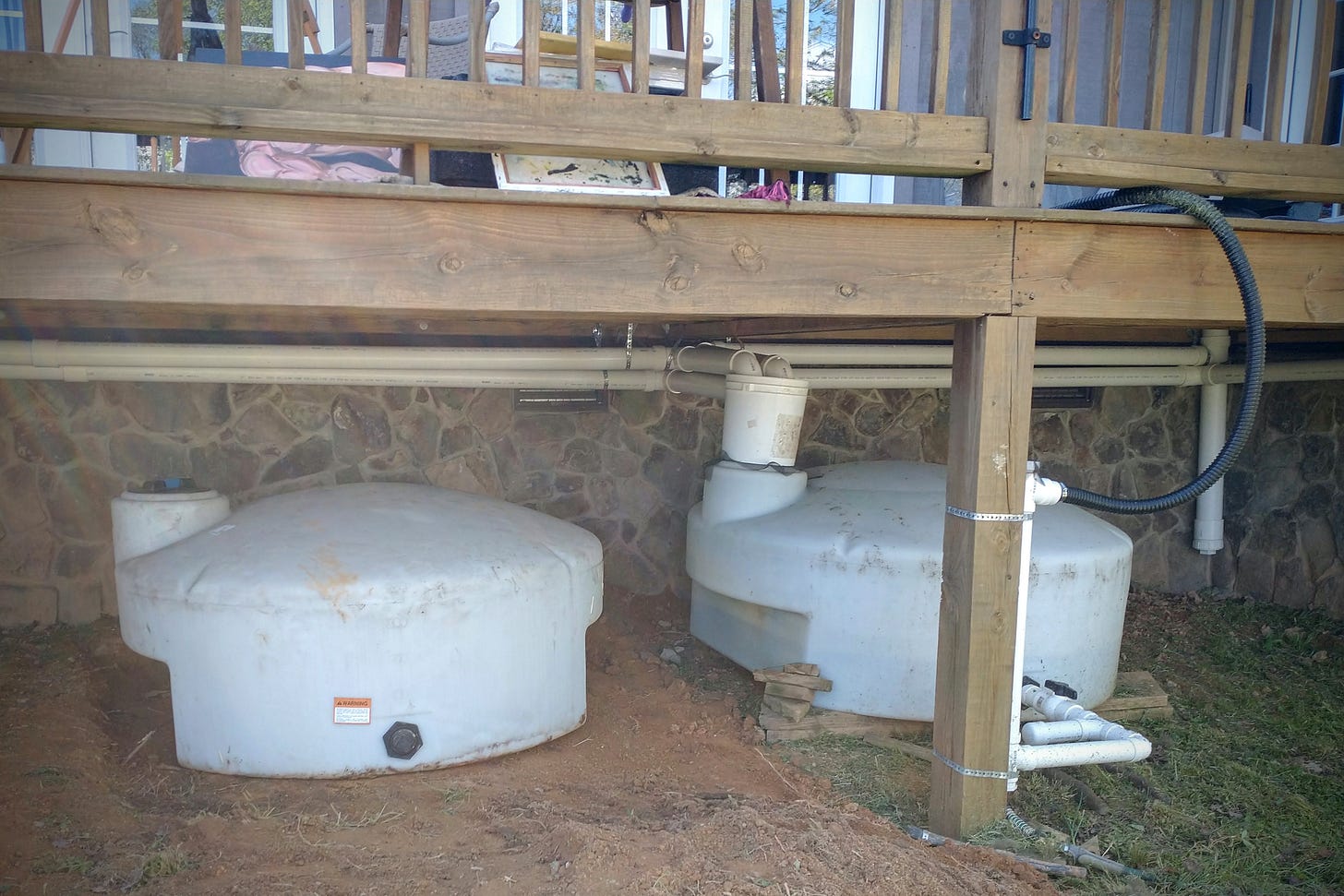






















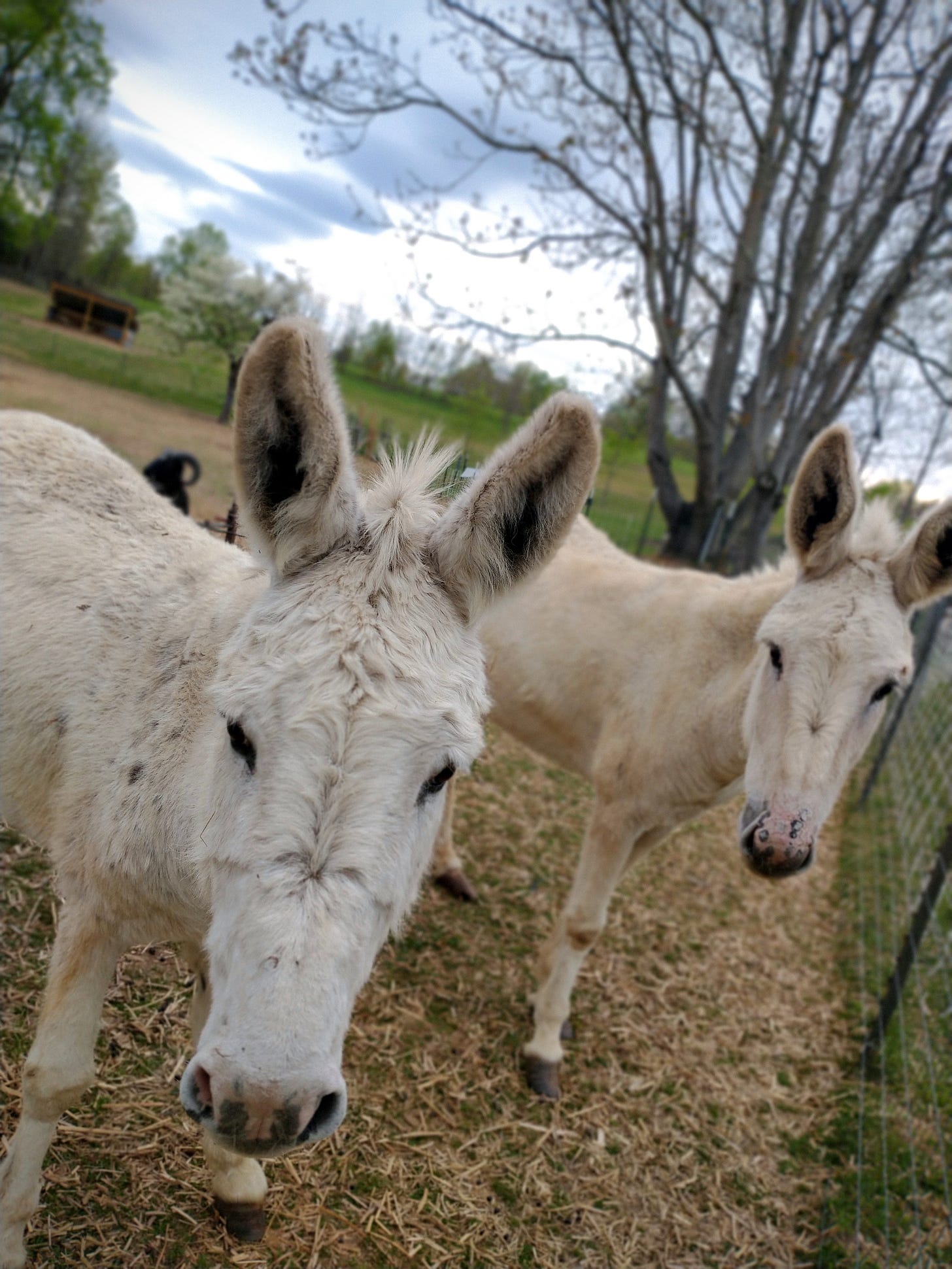






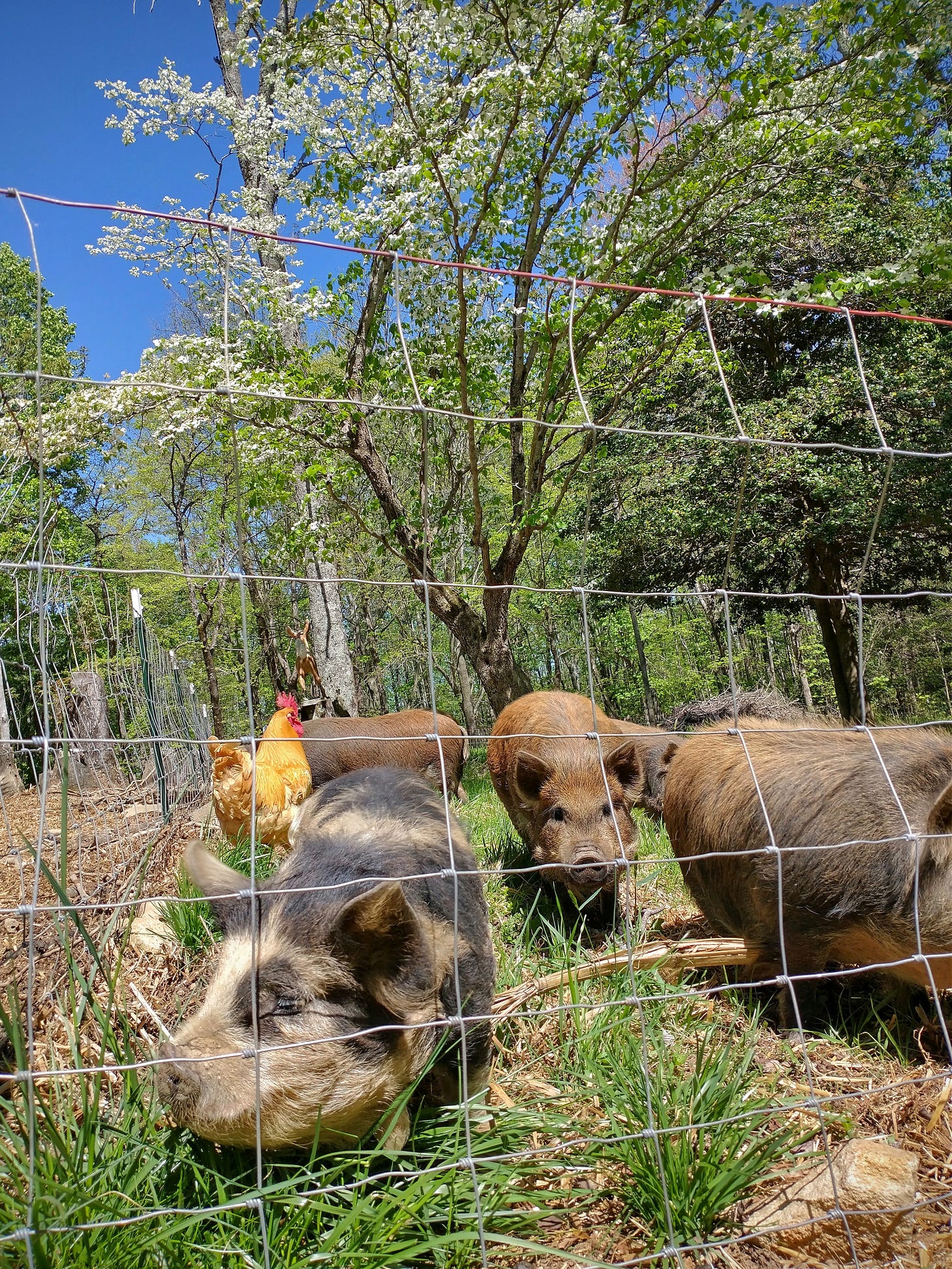


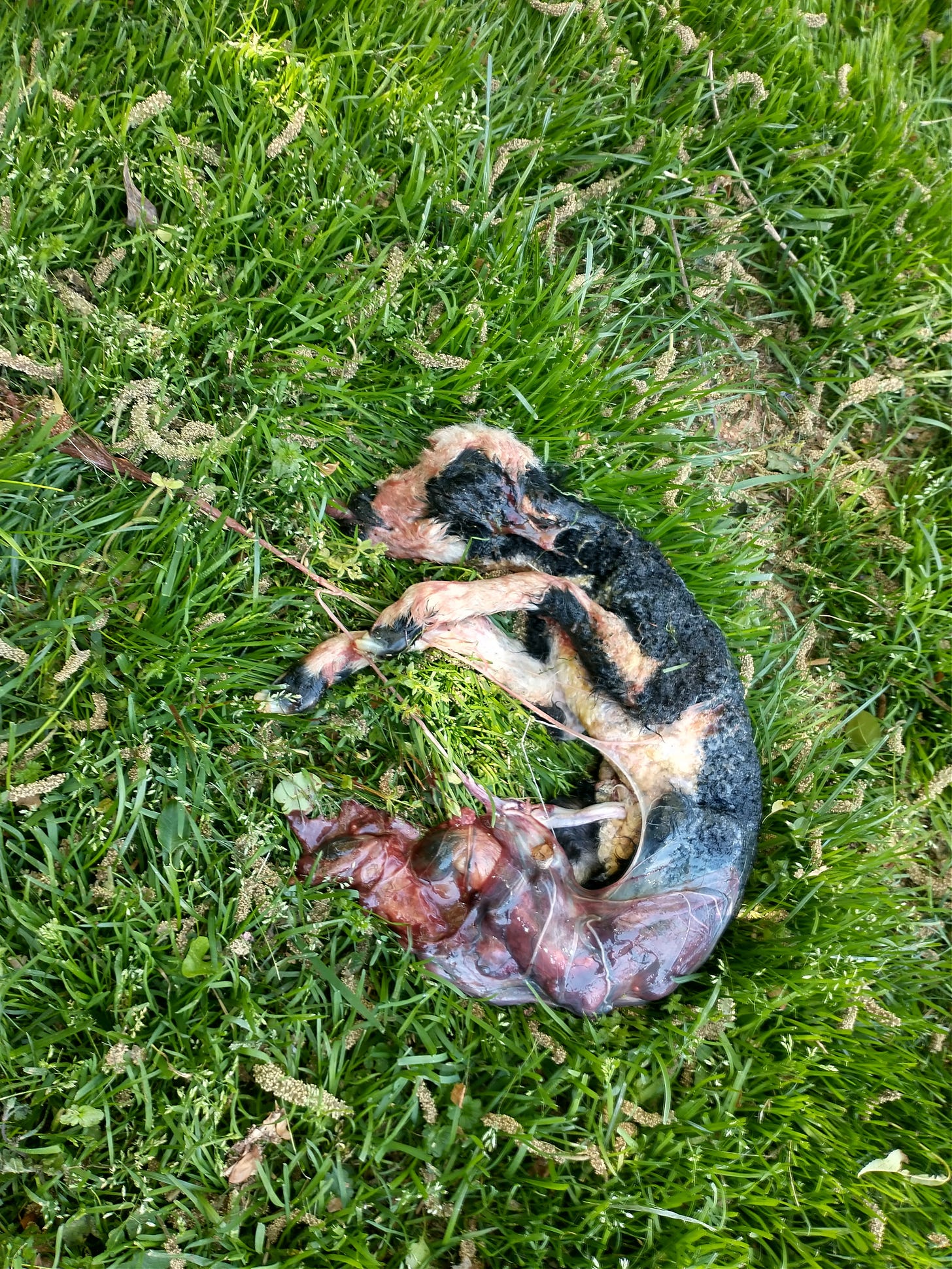
such amazing progress! I love seeing what and how you build and grow.
Love seeing all your pictures and the news. You're a world away from our farm but we've been doing it for a similar time, love all your animals. Sorry about the lamb, we actually had our first just last week which was just lovely.